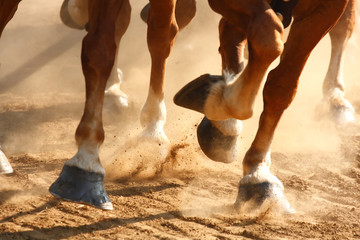
The curse of any punter is understanding track conditions and how it affects our selections. For example, Australian tracks during August to September 2016: three months of slow to heavy tracks and then we get good tracks which is the total opposite to our form information. So how do we read the going with most tracks.
Prior to a race meeting, an inspection of the racecourse’s surface is conducted by stewards. This process consists of a visual inspection and the use of a tool called a penetrometer which measures the soil’s resistance to penetration. The inspection is conducted before the meeting to allow publication of the track rating for the benefit of punters and trainers. In the case of rain prior to a meeting, a much earlier inspection will be made to permit an early decision as to whether the meeting can proceed, before travelling horses depart for the meeting.
Tracks may be upgraded or downgraded while a race meeting is taking place. The main reasons for this is that sun, heat or wind are able to dry out the track during the course of the day possibly resulting in track upgrade, or, that inclement weather and rain continues as the racing progresses (track downgrade). Jockeys too, will be involved in inspections made during the meeting if there is any doubt as to the safety of riding on a downgraded or wet track.
On December 1 2014, the Australian Racing Board put into place a revised 10-point system using ratings from Firm 1 through too Heavy 10. The revised system removed the terms ‘Fast’, ‘Dead’, and ‘Slow’ replacing them with ‘Firm’ and ‘Soft’ while also retaining the terms ‘Good’ and ‘Heavy’.
What are the official ratings recognised by all race clubs for Australian Track Conditions?
- Firm 1: Dry hard track
- Firm 2: Firm track with reasonable grass coverage
- Good 3: Track with good grass coverage and cushion
- Good 4: Track with some give in it
- Soft 5: Track with a reasonable amount of give in it
- Soft 6: Moist but not a badly affected track
- Soft 7: More rain-affected track that will chop out
- Heavy 8: Rain affected track that horses will get into
- Heavy 9: Wet track getting into a squelchy area
- Heavy 10: Heaviest category track, very wet, towards saturation
Additionally, a rating of AWT is being used to signify an All Weather or Synthetic Tracks, which equates to a Good (4) surface under some bad weather conditions. Artificial racing surfaces will remain the same in all weather conditions and presumably give all horses a fair chance.
I hope this helps you to understand track conditions better. Every horse has a liking for a certain condition and that is a fact. Any horse that can win on a regular basis and in any condition will always make you money.
And you can see that understanding all of the track ratings from a Firm to a Heavy10 is vital. Finding horses that win in all conditions is vital.
Knowing accurately how a track rates on the day and where the bias lies will often mean the difference between winning and losing. And we all want to win!